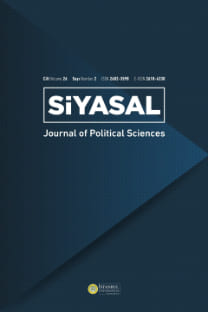Para KUrulu Yaklaşımı ve Bulgaristan Deneyimi
Para kurulu düzenlemesi, döviz kuru çapasına en güçlü şekilde bağlı olan katı bir sabit döviz kuru modelidir. İlk defa 1849 yılında uygulanan bu sistem, bir ara gözden düşse de 1990'h yıllarda yeniden popülarite kazanmaya başlamış ve kendisine geniş bir uygulama alanı bulmuştur. Eski Doğu Bloku ülkelerinden birisi olan Bulgaristan da, demokratikleşme sürecinde-yaşadığı ekonomik bunalımdan çıkış için bu yaklaşımı tercih eden ülkelerden birisidir. Bulgaristan'ın bugüne kadarki uygulama sürecinde bazı küçük sorunlar yaşansa da, genel olarak değerlendirildiğinde başarılı olduğunu söylemek mümkündür.
Currency Board Arrangement and Bulgaria Experience
Currency Board Arrangement is a hard fixed foreign exchange rate which has the strongest connection with the Exchange rate anchor. This system, which was first applied in 1849, once it has been accepted as a failure, on the other hand during the 1990's, it became more popular and took its place in the a pplication field. Bulgaria, which was once one of the eastern bloc country, has chosen this appropach in order to overcome the economic epression through the democratization process. Although some slight problems have been experienced up to now, generally the application of this system in Bulgaria can be accepted as successfull.
___
- AVRAMOV, Roumen, "The Role of Currecny Board in Financial Crises: The Case of Bulgaria," DP/6/1999, Bulgarian Natinonal Bank, Sofia, Erişim: http://www.bnb.bg, 07.08.2003. BALAZS, Horwath and Isvan P. SZEKELY,"The Role of Medium-Term Fiscal Frameworks for Transition Countries: The Case of Bulgaria," wp/01/2001, IMF, Erişim: http://www.imf.org, 10.11.2003. BALVOZOY, Zdravko, "The Bulgarian Financial Crisis of 1996-1997," DP/7/1999. Bulgarian National Bank, 1999. Erişim: http://www.bnb.bg, 07.08.2003. BECK, Static, Jeffrey B. MILLER, "Inflation and The Bulgarian Currency Board," DP/31/2003, Bulgarian National Bank, 2003, Erişim: http://www.bnb.bg, 07.08.2003. BULGARIAN NATIONAL BANK, Annual Report 2002, Sofia, 2003, Erişim: http://www.bnb.bg, 16 11.2003. DOBRINSKY, Rumen, "The Transition Crisis in Bulgaria", Cambridge Journal of Economics, Vol.24, No.5, September 2000, pp.582-583. ENOCH, Charles, Anne MARIE and Daniel HARDY, "Banking Crises and Bank Resolution: Experience in Some Transition Economies," WP/02/56, IMF, 2002, Erişim: http://www.imf.org, 10.11.2003. FISCHER, Stanley, "Maitaining Price Stability", Region, Federal Reserve Bank of Mineapolis, Vol. 11, Issue 2,1997. GANEVA, Elena and Charles ROBERTSON, "Stability of Currency Board in Bulgaria", 24 April 2002, Erişim www.research.ing.com, 14.05.2003. GÖVDERE, Bekir ve Serdar ÖZTÜRK, "Bulgaristan'daki Doğrudan Yabancı Yatırımlar". Finans-Politik &£konomik Yorumlar Dergisi, Y.41, S.481, Nisan 2004, ss.48-59. GÜLDE, Anne Marie, "The Role of the Currency Board in Bulgaria's Stabilization", IMF Policy Discussion Paper, 1999, Erişim: http://www.imf.org, 10.11.2003. GÜLDE, Anne Marie, Juha KAHKÖNEN and Peter KELLER, "Pros and Cons of Currency Board Arrangements in the Lead-Up To EU Accession and Partivipation hi the Euro Zone", IMF Policy Discussion Paper, PDP/00/01, Washington, 2000, Erişim: http://www.intf.org, 10.11.2003. HANKE, Steve H and Kurt SCHLER, "Currency Convertibility: A self Blue Print for the Commonwealth of Independent States," CATO Foreign Policy Briefing. No. 17, 1992, Erişim: http://www.forbes.com, 17.05.2003. HANKE, Steve H and Kurt SCHULER, Para Kurulları, (Cev.) Bekir B.Özipek, ve Metin Toprak, Ankara, Liberte, 2001. HANKE,.Steve H, "The Case for a Russian Currency Board System," No.49 October 1998, Erişim: http:www.forbes.com/hanke, 17.05.2003. HANKE, Steve H, "The Disregard for Currency Board Realities," CATO Journal, Vol.20, No. 1, (Spring/Summer 2000), p.50.
- ISSN: 1303-1260
- Yayın Aralığı: Yılda 2 Sayı
- Yayıncı: İstanbul Üniversitesi
